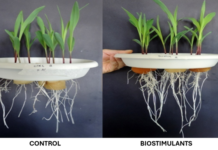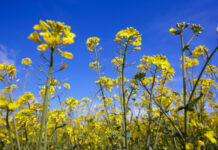With fertiliser prices at exceptionally high levels, producers can manage input costs and optimise yield this season by controlling weeds at the right time and with the best solutions.
South Africa imports about 80% of its fertiliser requirements, of which more than 40% is used in the production of maize. Already a significant input cost, the fertiliser price tag will be even greater in the 2021/22 season, given price hikes of up to 69% on certain products.
Several global factors are contributing to the increase, but for local producers the question is how to manage it. Effective weed control increases the amount of nutrients available to the crop and can optimise fertiliser use. The good news is that the year-on-year prices of most herbicides, except glyphosate, have stayed flat for the 2021/22 season.
Numerous studies over the past few decades have confirmed that weeds are greedy feeders with an appetite for nitrogen specifically. In the same way that maize plants respond to the application of nutrients, weeds grow better when they have access to extra nitrogen. Most important is the fact that weeds outcompete maize plants, leaving less nutrients available to the crop. The significance of this was highlighted by a study that showed that a 1% rise in the weed population can decrease maize yield by 68kg/ha.
Fertiliser application and weed management are two of the most critical management factors influencing maize yield. Striking the optimal balance between the two not only maximises yield, but also optimises the return on every rand spent on inputs.
Weed control has to start very early in the weed’s growth cycle. This is, firstly, because weed interference at early stages of maize development significantly decreases yield, and, secondly, because bigger weeds are more difficult to control. In addition, the weeds will continuously compete for the fertiliser intended for the crop. The best way to optimise and protect maize yield is by limiting the time weeds have to compete with maize plants by applying herbicides at a very early stage.
The optimal approach would be to apply fertiliser before or at planting, followed by a full-area application of a pre-emergence herbicide. If weeds are already present, a non-selective herbicide can be added. Twenty-eight days later, once the crop has emerged, a post-emergence herbicide should be applied to eliminate weed competition during the maize plant’s critical development stages (see sidebar), and to encourage optimal yields.
Golden rules for weed control this season
- Decide on what strategy to follow on a specific field, keeping the history in mind.
- Reference the product label to make sure the correct dosage rate is applied.
- Apply herbicides with residual action both before and after crop emergence to limit weed competition during the critical growth stages.
- Ensure application equipment is in good working order.
- Calibrate spraying equipment to ensure correct application rates and even distribution.
- Keep the restrictions for follow-up crops in mind when selecting herbicide products and dosage rates.
- Only use products from respectable suppliers.
- Do not select herbicide products on price only. Active ingredient properties alone do not determine the efficacy of a product. Product formulation, which includes the adjuvants added to the active ingredient, influences how the active ingredient is taken up by weeds and also contributes to crop safety.
The 4 critical stages for weed competition in maize
- Between planting and the 3-leaf stage, after which damage is irreversible
- 5- to 6-leaf stage, when the number of rows per ear is fixed.
- 10-leaf stage (tasselling), when the number of kernels per row is determined.
- Reproductive stage, when the weight of the kernels is determined.
Any damage to the maize plant (lack of nutrients, water, sunlight, etc. due to weed competition) at the 3-leaf stage is irreversible and will influence yield.

PC Nel & JG Ehlers ,Dept of Plant production University of Pretoria









